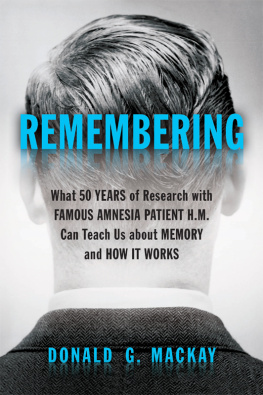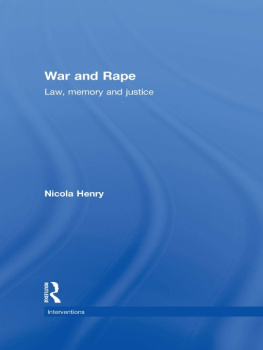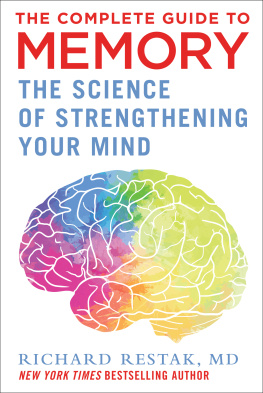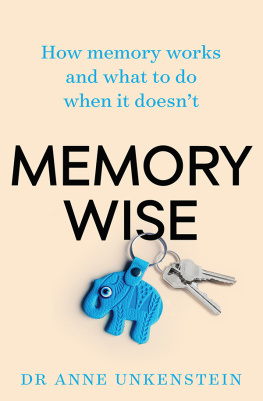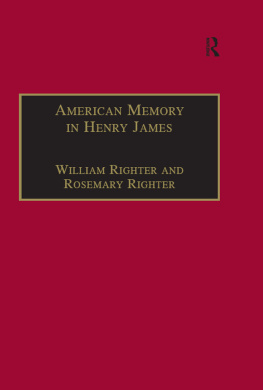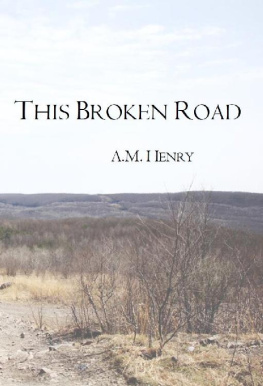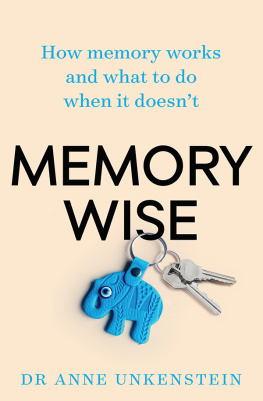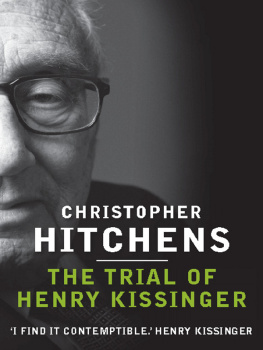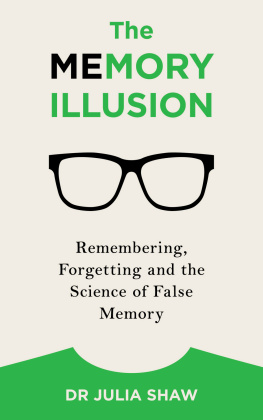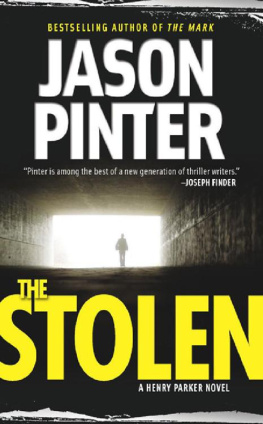
Remembering would not exist without three helpful people: Hans-Lukas Teuber, Suzanne Corkin and Henry Molaison. I thank Professor Teuber for introducing me to Henry in 1966. I thank Dr. Corkin for inviting my lab to test Henry at the MIT Clinical Research Center in the late 1990s. And I especially thank Henry for participating tirelessly, and unbeknownst to me, without remuneration, in my experiments.
Endless thanks and love goes to my wife, Deborah May Burke, for encouraging and supporting every aspect of this research and book-writing project, from beginning to end. Without her help, I could not have written Remembering. Virtually every chapter benefited from Deborah's wisdom and extensive knowledge of the scientific literature on memory and cognitive aging. By providing thoughtful comments on multiple drafts of the book, sometimes at extremely short notice, Deborah also helped me meet what seemed like impossible publisher deadlines.
Another huge set of thanks comes to my friends in the Claremont Writing Workshop, especially Don Coleman, Judith Favor, Daniella Franco, Connie Green, Lissa Petersen, Peggy Redman, John Rogers, Laura St. Martin, Hart St. Martin, Barbara Smythe and Teri Tomkins. Their constructive critiques of my early drafts taught me how to write non-academic prose. I also thank Judith Favor and Lissa Petersen for the compassion and sagacity of their observations and suggestions after reading Remembering in its entirety. Much appreciated too was the helpful thoughts, advice, comments, or encouragement from Alan Castel, John Berry, Gus Craik, Luke Dittrich, Jim Geiwitz, Lori James, Barbara Jay, Cynthia Kenyon, Samantha Kimmey, Richard Kirschman, Herb Kutchins, Ivan Light, Laura Lopez, Doris Ober, Alex Riley, Jasper Rine, Meredith Shafto, Lolly Tyler, William Marslen-Wilson, and my son, Kennen MacKay.
I also thank William Marslen-Wilson for providing paper copies of the transcript of his 1970 interviews with Henry and for allowing Lori James and I to post this important information on the Internet. Thanks likewise to Luke Dittrich for providing the useful photographs he took of Henry's 1982 responses to questionnaires in the Beck Depression Inventory. Special appreciation too goes to Lissa Petersen and Jim Geiwitz. Their honest appraisal of the Reflection Boxes and Illustration Boxes in the advanced reader copy of Remembering helped me redesign and revise those sidebars to engage a wider audience. Thanks as well to members of my target audience, too numerous to mention by name, who served as an international focus group for evaluating draft aspects of Remembering, including its proposed titles and cover designs.
However, it is to my outstanding research assistant, Micah Alan Johnson, that I wish to express my foremost gratitude. To encourage readers to reflect on and apply what they learned to their personal life, Micah drafted the Questions for Reflection at the end of each chapter. To help readers consolidate what they learned, Micah drafted the Test your Memory Questions that ended the chapters. Micah also conducted analyses of Henry's 1982 responses on the Beck Depression Inventorystatistics essential for settling a scientific dispute about Henry's everyday state of mind in the years following his operation. By researching and summarizing the many recent findings on humor, laughter, and the brain, Micah also greatly strengthened the chapter on Henry's keen sense of humor. Micah even assisted with the automation of citations, copyediting, content editing, and proofreading the book, constructing novel figures, compiling chapters into a book file, obtaining high resolution images and reprint permissions, and recruiting a graduate student artist to create additional figures from scratch. For all this and more, I thank Micah.
Next to last, I thank Cynthia Zigmund, literary agent with Second City Publishing Services in Chicago. Cynthia negotiated the book contract for Remembering and helped me navigate the sometimes treacherous straits and choppy waters of the highly competitive world of publishing. Lastly, I apologize to friends whose help with this project over the past fifty years I have forgotten. By reminding me, your name will appear in the second edition of Remembering.

February 1926: Henry's date of birth.
1947: Henry graduates from high school.
August 1953: Henry consents to and undergoes brain surgery in Hartford, Connecticut.
Spring 1965: As a twenty-three year old MIT graduate student, I meet Henry and test his ability to detect and explain the two meanings of ambiguous sentences.
Spring 1972: I distribute to friends and colleagues at UCLA an unpublished manuscript comparing comprehension, memory and attention in Henry versus the thirty Harvard undergraduates who participated in my ambiguity detection experiment.
December 1980: Henry enters the Bickford Health Care Centerhis home for the rest of his life.
December 1981: Henry's mother dies.
19922015: Based on Henry's errors in comprehending and producing sentences in my 1966 study, I design and conduct a series of experiments in collaboration with Dr. Deborah Burke, WM Keck Professor of Psychology and chair of the Linguistics and Cognitive Science Department at Pomona College, UCLA postdoctoral fellows Jennifer Taylor and Elizabeth Graham, UCLA graduate students Meredith Shafto, Lise Abrams, and Laura Johnson, and undergraduates Marat Ahmetzanov, Joel Schwartz, Diane Marian, and Jennifer Dyer. Given Henry's amygdala damage, our goal was to understand the role of the amygdala and emotion in perceiving and recalling taboo versus neutral words presented at extremely rapid rates. The basic conclusion of our studies was that emotional information receives priority over neutral information in the process of forming new memories. In short, when time is limited, the amygdala sets priorities for the hippocampus.
19952013: My UCLA lab, the lab of Dr. Lori James at the University of Colorado, Colorado Springs, and the lab of Dr. Deborah Burke recruit about sixty individuals with age-normal memory who resembled Henry in age, education, socio-economic status, background and intelligence. From 1995 until 2013, these control participants performed twenty-five tasks that closely resembled the ones that Henry completed at MIT from 1966 to 1999.
Winter 1997: I design and Dr. Lori James runs the first seven of the twenty-five MIT experiments that tested, among other things, Henry's ability to define uncommon words, to distinguish words from non-words, and to spell and correctly pronounce familiar words that were irregularly spelled.
19982010: Based on Henry's sentence comprehension errors in my 1966 study, I design and conduct a series of experiments in collaboration with UCLA graduate student Meredith Shafto. The goal of our experiments is to understand why normal individuals miscomprehend questions resembling How many animals of each kind did Moses take on the ark? The basic conclusion of our studies is that accurate comprehension of novel information is a creative process that requires engagement of the hippocampus, unlike routine comprehension involving existing internal representations for words such as Moses and Noah.
Winter 1998: I design and Dr. Lori James runs six experiments to test, among other things, Henry's ability to describe pictures on the Test of Language Competence, and to read aloud ambiguous and unambiguous sentences and high versus low frequency words presented in isolation.
Next page
